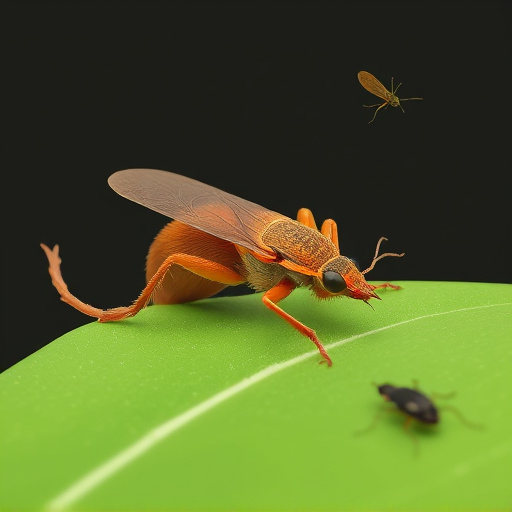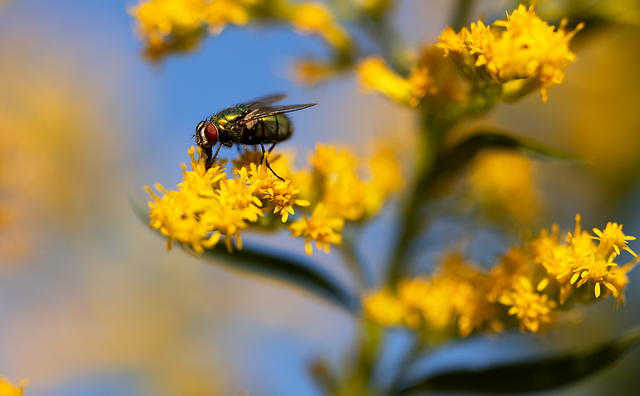Fleas and ticks, though small, pose significant health risks by transmitting diseases like Lyme disease and Anaplasmosis. They can quickly spread through wildlife, infected pets, and habitats. Regular monitoring and professional Pest Control Services are crucial to prevent infestations in homes and yards. Expert technicians use advanced techniques and treatments, targeting hidden spots, while proactive steps include yard upkeep, pet bedding cleaning, and specific indoor/outdoor treatments. Choosing the right Pest Control Services involves matching needs with expertise, considering property size, severity, health, and safety. Proper post-treatment care includes regular checks, thorough cleaning, vacuuming, hot water washing, and observing for adverse reactions to ensure a flea- and tick-free environment.
Flea and tick infestations can pose serious health risks to both pets and humans, causing discomfort, allergic reactions, and even transmitting diseases. Understanding these pesky parasites is the first step towards effective prevention. This article guides you through all aspects of flea and tick control, from identifying common types and their behavior to choosing the right pest control services. Learn about proactive measures for your home and yard, post-treatment care, and more to protect your pets and family year-round.
- Understanding Fleas and Ticks: Common Types and Behavior
- The Impact of Fleas and Ticks on Pets and Humans
- Effective Preventive Measures for Your Home and Yard
- Choosing the Right Pest Control Services for Your Needs
- Post-Treatment Care and Monitoring for Optimal Results
Understanding Fleas and Ticks: Common Types and Behavior
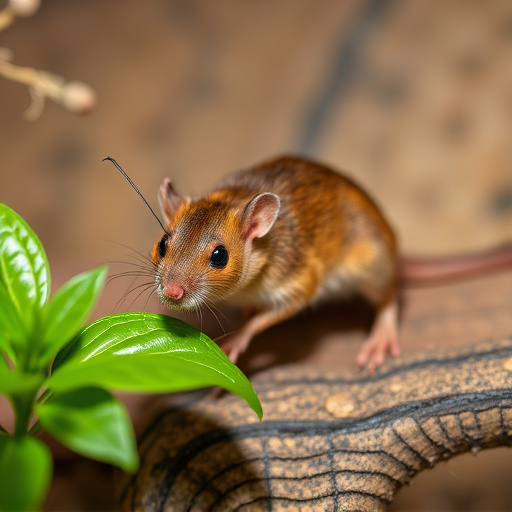
Understanding Fleas and Ticks is a crucial step in effective pest control services for your pets and family. These external parasites are small, wingless insects that feed on the blood of mammals, including dogs, cats, and humans. Fleas are known to jump vertically up to seven inches and can quickly spread across animals and environments. They are often carried by wildlife or introduced through contact with infected pets or their habitats.
Ticks, on the other hand, are arachnids that attach themselves to hosts to feed on blood. They are generally found in areas with tall grass, shrubs, or trees, waiting for suitable hosts to pass by. Both fleas and ticks can transmit diseases, such as Lyme disease, Anaplasmosis, and Babesiosis, which pose significant health risks to pets and humans. Regular monitoring and appropriate pest control services are essential to keep these pests at bay, ensuring a healthier environment for your loved ones and their four-legged companions.
The Impact of Fleas and Ticks on Pets and Humans
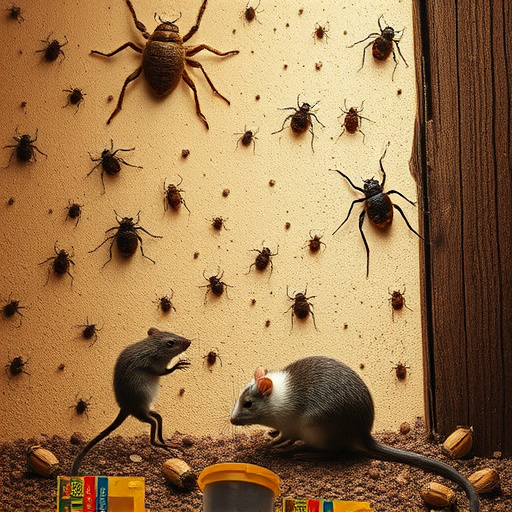
Fleas and ticks are more than just annoying pests; they can have significant impacts on both pets and humans. These external parasites can cause discomfort, skin irritation, and allergic reactions in animals, leading to excessive scratching, hair loss, and even anxiety. In severe cases, fleas and ticks can transmit diseases such as Rocky Mountain spotted fever, Lyme disease, and tapeworms, posing serious health risks to pets and, indirectly, to family members through contact with infected animals.
For pet owners, the presence of fleas and ticks can lead to increased veterinary bills, as well as the need for regular pest control services to keep these pests at bay. To protect both their pets and families, it’s crucial to implement preventive measures like regular grooming, spot-on treatments, and using flea and tick collars. Additionally, maintaining a clean living environment, sealing entry points, and promptly removing leaf debris can help minimize the risk of these parasites invading homes and lives.
Effective Preventive Measures for Your Home and Yard
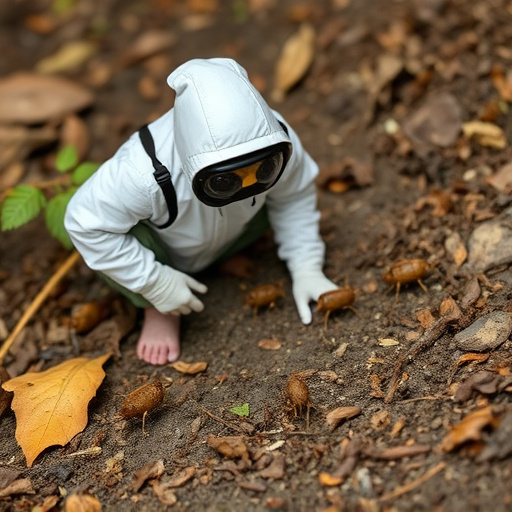
Implementing effective preventive measures is key to maintaining a flea and tick-free home and yard, ensuring the well-being of both your pets and family. Regular professional pest control services play a pivotal role in this regard. Expert technicians employ advanced techniques and treatments to eliminate existing infestations and deter future ones. They target hidden spots like carpets, furniture, and wall crevices where these parasites tend to lurk.
In addition to professional interventions, proactive steps can be taken. Keeping your yard neat and free of debris creates less favorable habitats for fleas and ticks. Regularly trimming grass and shrubs, as well as cleaning pet bedding and play areas, significantly reduces their population. Moreover, using insect growth regulators (IGRs) in indoor spaces and specific treatments for outdoor areas can provide long-lasting protection, breaking the pest life cycle and preventing reinfestation.
Choosing the Right Pest Control Services for Your Needs
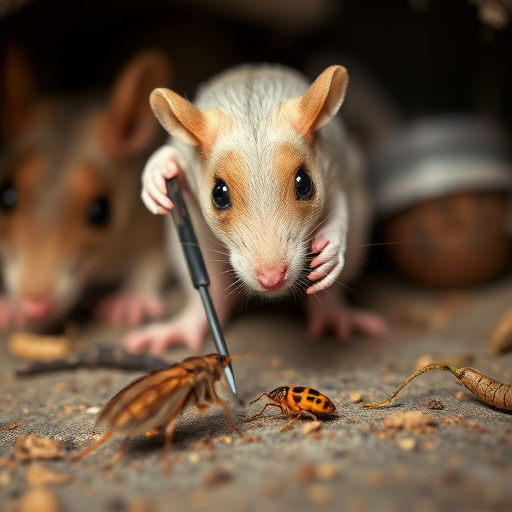
When selecting Pest Control Services for your flea and tick problems, it’s crucial to match your needs with the expertise of the service provider. Different companies offer various solutions, from traditional chemical treatments to eco-friendly, natural methods. Understand your options and choose a company that specializes in flea and tick control specifically. This ensures they have the necessary tools and knowledge to handle these persistent pests effectively.
Consider factors like the size of your property, the severity of the infestation, and any health considerations within your family or around pets when making this decision. Reputable Pest Control Services should provide detailed plans, including product usage, safety measures, and follow-up visits to ensure the issue is resolved completely.
Post-Treatment Care and Monitoring for Optimal Results
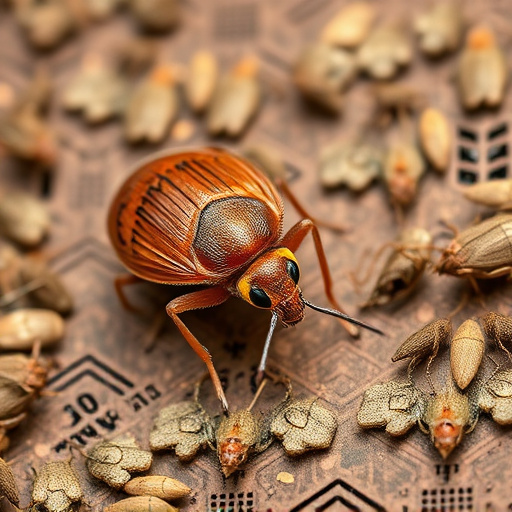
After applying any flea or tick control method, proper post-treatment care and monitoring are essential for achieving optimal results from pest control services. This includes regularly checking your pets for any signs of remaining pests, as well as thoroughly cleaning their living spaces to prevent reinfestation. Vacuum floors and upholstery often, and wash your pet’s bedding and toys in hot water to kill any lingering pests or eggs.
Additionally, keep an eye on your family members, especially children and those with compromised immune systems, for any adverse reactions to the treatment. If you notice any skin irritations, rashes, or other concerning symptoms, contact your veterinarian immediately. Regular monitoring and follow-up actions are key to maintaining a flea- and tick-free environment, ensuring the safety and comfort of both your pets and your family.
In light of the above discussions, implementing a robust flea and tick control strategy is essential for safeguarding both your pets and family. By understanding these parasites’ behavior, recognizing their impact, and adopting preventive measures, you can create an environment that discourages these unwelcome visitors. When professional Pest Control Services are required, selecting the right expertise ensures effective treatment and minimizes potential risks. Following treatment, continued monitoring and post-care routines maximize protection, ensuring a healthier, happier home for everyone.
